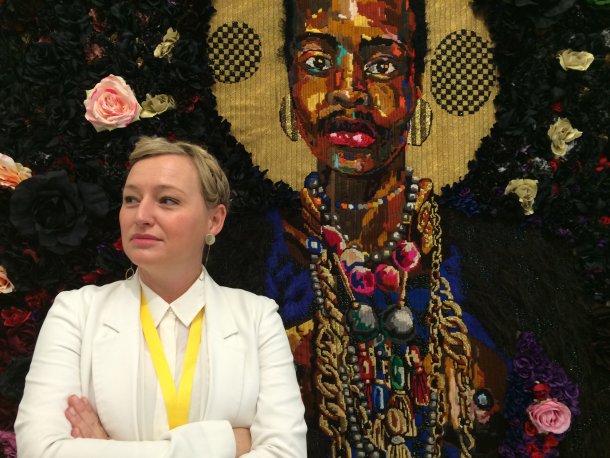Athi-Patra Ruga na 2ª edição de 1:54 Contemporay African Fair
Publicado17 Out 2014

Imagem: Ashleigh McLean, da WhatiftheworldGallery
A 2ª edição da 1:54 Contemporay African Fair decorre esta semana, em Londres, com a presença de alguns artistas conhecidos do Próximo Futuro, entre eles Athi-Patra Ruga, que integrou a exposição 'Artistas Comprometidos? Talvez?', na Fundação Calouste Gulbenkian até 7 de Setembro deste ano.
Neste evento internacional, o artista é representado pela Galeria WHATIFTHEWORLD, criada em 2008 na Cidade do Cabo, com curadoria de Ashleigh McLean, que explicou a sua visão do mercado local e global da arte africana, das galerias e dos artistas.
McLean estimates around 30-45 serious collectors living in South Africa who are regularly buying Contemporary African Art. The gallery tries to break through the conservative outlook which plagues many South African buyers. At auction, there is no shortage of people willing to spend exorbitant amounts of money on master painters from South Africa. McLean states that the contemporary art market is not there yet, but that doesn’t mean that it isn’t gaining traction. This is why art fairs like 1:54 are so important. As a younger gallery, working towards creating and cultivating a younger generation of collectors, these public and international art fairs offer opportunity to cultivate such relationships. McLean estimates around 60% of their business comes from the US and Europe. Developing their international Contemporary African Art collectors is just as important as developing the local.
(...)
Athi-Patra Ruga is from Umtata, South Africa, where Nelson Mandela was born and home to one of the only Black Universities open during apartheid. His history is visible in his work. He explores the idea of maps, border-zones between all varieties of visual art. As is the case across most of the African Continent, the modern conflicts are due to arbitrary boundaries placed by colonial powers, causing forced migration and mass exodus. Ruga works with this idea of disenfranchisement created by cultural/political mechanisms of government and nationalism. In response, Ruga creates his own, almost utopian, republic; one where a persons cultural identity is not constrained by geographical boundaries or ancestry. He is changing what people think when they think of Africa. Instead of death, destruction, the dark continent, his work allows people to engage with art and Africa from a slightly different perspective. Although his issues are multifaceted, his aesthetic remains colorful and exuberant as he draws inspiration from camp culture and the fashion world.
O artigo completo, aqui
